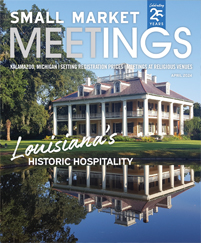At the last major convention you attended, was there a smiling face with local destination expertise there to greet you at the airport or at the front door of the convention center? Or was there, perhaps someone not from the conference team, but a local from the CVB excited to share their destination with incoming attendees?
While they go by many names, these CVB volunteer corps members can form the backbone of a meeting planner’s welcome committee at no cost to the planner in many destinations. The key is to understand how these programs differ from one destination to another, what the cost of the additional staffing is and in what ways planners can use these additional feet on the ground.
Volunteers Versus Paid Staff
To meeting planners, these extra helping hands are often lumped together under the heading of “volunteers,” but some CVBs classify these additional staff as volunteers while others pay them and view the cohort as more of a temporary staffing pool. The latter case creates more opportunities for meeting planners, as paid workers can be easier to schedule.
“Many CVBs, including us, have a temporary staffing agency as part of what we do,” said Marcy Roitman-Booth, director of destination services for the Grapevine Convention and Visitors Bureau. “The meeting planners and organizations that we serve think they’re volunteers, but they’re actually paid staff.” Her “Burgundy Brigade,” so named for the burgundy blazers or burgundy polos the team dons depending on the formality of the event, is available to help organizations with whatever task they need to get done, from registration to bag stuffing. But one of the advantages Roitman-Booth has found of having paid staffers is the ability to train them in high-level customer service tactics.
“We have ongoing training and staff meetings throughout the year to make sure the messaging is clear and check in on how to interact with visitors and customers,” said Roitman-Booth. “We cover how to find people that are standing there and clearly lost but not asking for help, and how to zero in on them and extend the hand of hospitality, or how to be conscious of little words like ‘no problem,’ which subliminally say there was a problem that we didn’t know existed in the first place.”
Though Grapevine has 75 members in its paid staffing program, some CVBs, like the one in Little Rock, Arkansas, use a combination of paid staffers and volunteers; others, especially smaller operations like that in Cheyenne, Wyoming, use a fully volunteer-driven solution.
“Our staff is limited to seven to eight people, so when we get a conference like the governor’s association, to provide the services that we’re promoting we call on volunteers that we can rely on,” said Jim Walter, director of sales and marketing for Visit Cheyenne. In Cheyenne’s case, this cohort comprises former CVB board members or employees, along with people from the larger local hospitality community who have self-identified as interested in welcoming guests to the city.
“Former board members work well for us because they know our mission and services,” he said. “You’re often dealing with out-of-town visitors who are having an allergy attack and in need of the nearest Walgreens or looking to take six guys out for dinner, and you want someone who can say, ‘You want to go to the Chophouse, and here’s the number, and you’ll need to get a reservation, and here’s the table you should ask for.’”
How to Get the Most Value From Your Volunteers
CVBs use different methods to calculate the number of volunteer hours available to meeting planners. Sometimes, it is based on the number of peak nights booked in room blocks or as a combination of factors contributing to economic impact. In other instances, a base number of volunteer hours is offered, and then meeting planners have the option to book additional staffing at an hourly rate.
Many CVBs with volunteer programs outline the availability of this option well in advance — sometimes even a year or more — to ensure planners can take full advantage of the volunteers’ unique skill sets. But planners don’t always get in touch with their needs until a few weeks before the event. Though CVBs are able to respond in most of these situations, such as a recent instance in which Roitman-Booth received a request four weeks out and was able to staff 98 percent of the request in three days, the earlier you interface with CVB staff about your volunteer needs, the better the results, especially in cases where the staffers are unpaid.
In cases where volunteers are unpaid, Walter also advises meeting planners to be cognizant of the amount of downtime volunteers get. “If people are volunteering their time for you, make sure they have something to do when they get there, because if they arrive and stand there and watch everyone else work, they wonder, ‘Why am I giving up my time?’” he said. One of the best ways to create a win-win-win — an ideal staffing situation for your volunteers, your staff and your attendees — is to take advantage of the high skill level of these volunteer corps and integrate them into your event in more ways than the usual registration staffing, way finding and swag-bag stuffing.
Roitman-Booth had one program in which the event staff did not have enough of their own organization’s volunteers to introduce speakers and breakout rooms, so she selected some of her more eloquent members, who had had previous professional careers involving public speaking and set them up to introduce speakers and be the emcee running each room.
The Little Rock CVB prides itself on training its team to integrate into incoming meeting groups by asking the right questions of both event staff and attendees, whether it’s giving restaurant recommendations or serving as greeters in the convention center lobby to welcome attendees with a beverage and a smile. But one of the most creative and highly appreciated ways it has incorporated volunteers into events is for the final send off. “We have them at the airport on the day of departure, so they are the last face you see when you leave, saying, ‘Thank you for coming. We hope you’ve enjoyed your stay and that you’ll tell someone else about it,’” said Alan Sims, vice president of sales and services for the Little Rock Convention and Visitors Bureau.











